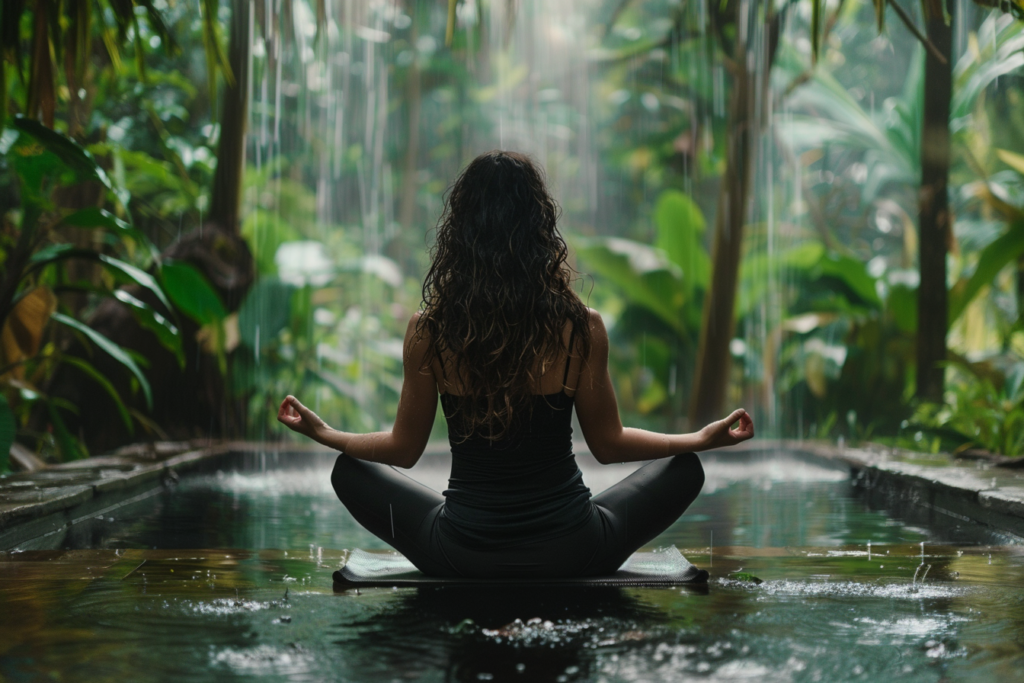How to Develop a Personal Spirituality Practice
Finding your own path takes time, that’s for sure. You won’t find the meaning of life in one day, nor in the span of a week. What’s more: the longer you search for answers, the harder it might get. That’s when having personal spirituality practice comes in handy. When lost in our busy, noisy world, you can always use your private practice to calm down, and reach within yourself. But how do you develop a personal spirituality practice? Find out now.
What Is a Personal Spirituality? Defining Your Own Path
Defining spirituality is already hard—doing that for personal spirituality is even harder. In my understanding, it’s a collection of practices, that you perform/use on your own.
Private spiritual practice ideas are characterized by:
- Personalization – they consist of techniques, that work best and are favored by an individual. For example: I love self-hypnosis and visualization meditation, but I dislike candle meditation. So I use the first two, and don’t force the third.
- Individualization – most of those practices might be done while alone. That doesn’t mean you can’t do them with others. You just don’t need to rely on the outside help.
- Fluctuation – once you create your own personal spirituality practices, you don’t have to stay strict. As you learn and grow, so should your techniques. Moreover: you might use different methods to satisfy various needs and goals.
There are a lot of spiritual practice ideas to choose from. Some involve religion, others rely entirely on personal feeling. The key is to find those, that fit you the best.
Please keep in mind, however, that this is just my definition. It’s been a good use to me, and will help you understand the whole article.
But in the end, you are more than welcomed to craft your own definition!
Sacred Time and Space: Creating an Environment for Reflection
Before we delve into the spiritual practice ideas themselves, it’s important to talk about conducive environment. There are no hard and fast rules here. However, here are my tips on how to build your own ‘home temple.’
Don’t Practice Where You Sleep
Your brain is used to certain things, and it associates your bed with sleeping. At the same, many spirituality techniques like meditation have a risk of falling asleep. Thus, why you shouldn’t meditate in bed. If it’s possible, don’t exercise spirituality in the bedroom, unless it is a specific practice, like prayer or gratitude before sleep.
Safety Is Sacred
Personal spirituality often involves going into deep states of relaxation. You delve into the parts of yourself, that don’t come up on a daily basis. When that happens, you need to feel truly safe, in order for the whole practice to be effective. That’s why I recommend creating an environment, in which you feel safe.
Sit in your favorite cushion, light the candles you like best. Don’t be ashamed to bring your teddy bear, that gives you safety and comfort. It’s all supposed to serve you.
Take Your Time
Personal spirituality takes time—both in the long-term and short-term. What do I mean by that?
In the long-term, you need to study different spiritual practice ideas, and test them. What works best for you, what you don’t enjoy, what you see potential in for yourself.
In the short-term, all practices take time and you shouldn’t rush them. If you are under time pressure, you will worry about it more, than you will enjoy the practice itself.
Thus, my advice is: make it a fixed point of a day to study and practice. Don’t neglect it, and with time, personal spirituality will become a habit.

Spiritual Practice Ideas for Mind, Body, and Soul
As I’ve said earlier—with time, you’ll create your own personal spirituality rituals. But we all have to start somewhere, and it’s good to have an inspiration. So here is my list of spiritual practice ideas, that you can implement even today.
- Morning Intention Setting – start your day with a prayer, affirmation or short self-hypnosis session. It helps you align your actions with values and goals, setting a solid, positive mindset.
- Sacred Reading & Reflection – put away your phone, sit in a silent place (or use ear plugs if needed) with a book, scripture or poetry, that’s important to you. To many of us it’s the Bible, but that can be any other spiritual or sacred writing.
- Breath-work with Visualization – close your eyes and practice deep, intentional breathing. Visualize divine white light, filling you up with energy. At the same time, imagine black smoke leaving your body with each exhale.
- Intuitive Free-Creating – engage in spontaneous creative expression—writing, drawing, painting, singing, dancing, or playing an instrument—without focusing on perfection. Let the intuition guide you!
- Creating a Simple Ritual – light incense, say a mantra, or place your hands over your heart before meditation or prayer. Small rituals add sacredness to everyday practices.
As always, I recommend you to experiment and try all those spiritual practice ideas on your own. You might have guessed already, but my favorite is intuitive free-writing. It’s usually recommended to abstain from computer/mobile/etc during those kinds of practices.
However, I prefer writing on computer, as it’s easier for me to come back to it later on.
Thus, don’t take for granted rules, that work for others. You should try other’s people practices, but in the end it’s up to you what serves you best.
Why Spiritual Growth Matters: The Benefits of Daily Practice
Once you craft your personal spirituality rituals, it’s good to make them a habit. I’ve talked about how to make a habit in my guide on meditation for beginners. Feel free to check it out HERE.
Why does it matter? Because spirituality works best, when it’s a part of your everyday routine. There is nothing wrong with taking breaks, of course.
But meditating only once in a month, performing praying only when you feel bad—that won’t build a solid basis for your spirituality to grow. You need to put spiritual practice ideas into life.
Treat your personal spirituality as an important part of the day. You don’t just go to work because you don’t feel like it, right? Or skip tooth brushing because you are sleepy (at least, I hope you don’t!)
Spirituality should work the same for you. The benefits of daily practice include:
- Deeper connection with yourself and your surroundings;
- Sense of sacred meaning;
- Better mental health;
- Calmer emotional reactions;
- Anxieties reduction.
The longer you practice your personal spirituality, the better and stronger are the results. With time, you will realize that both your empathy and emotional resilience grew. And in a span of few years…
…who knows what you’ll be capable of?
Spiritual Practice Ideas to Bring More Meaning Into Everyday Life
Once you are more accustomed to your personal spirituality, try bringing it out. This might seem contrary to what I’ve said earlier about sacred time and space. But if you look at this deeper, it’s not.
What I mean by that is: don’t just practice mindfulness, meditation, prayers or hypnosis in a closed room. There are many every day activities, that you can mix with spirituality.
For example: try mindful eating at work. Instead of just rushing through a meal, thinking about other stuff, feel the taste, the texture, the smell.
While stretching after a workout, don’t wander with thoughts. Feel the tension in your body, let the muscles relax.
Bring your prayers to others. Maybe some of your friends or family would like to pray together? There is no telling if you don’t ask first!
Don’t rush it, of course, but explore with curiosity. Who knows how your everyday life will change?
Deepening Your Connection: Exploring Rituals and Traditions
 When you research spiritual practice ideas, you will notice that many of them might seem familiar to you. That depends on, of course, where you live, how were you raised, what book you’ve read, but…
When you research spiritual practice ideas, you will notice that many of them might seem familiar to you. That depends on, of course, where you live, how were you raised, what book you’ve read, but…
…they seem strangely familiar, right?
Let’s take mantra meditation—it might seem familiar to many prayers, doesn’t it?
Repeating a sacred phrase or sound, whether it’s a Sanskrit mantra, a Christian rosary prayer, or a personal affirmation, cultivate a sense of connection with the Creation.
Walking meditation has echoes across cultures and religions. In Buddhism, monks practice mindful walking. In Christianity, pilgrimages to sacred sites serve a similar purpose—encouraging reflection, devotion, and inner transformation.
While looking for spiritual practice ideas, it’s worth looking into rituals and traditions of your ancestors. Or things from the past, that resonate with you deeply.
For example: let’s take Norse mythology. If you feel connected to it, why not incorporate meditating on runes into your personal spirituality? They hold great wisdom. You’ll be surprised what you might find in them!
Or maybe you are interested—like I am—in Slavic mythology? Then I recommend you try reflecting on Perun’s nature. Was he just a god of war, agriculture and Thunder? Or maybe he was rather similar to henotheism god?
There are multiple spiritual practice ideas that can be drawn from different cultures. Once again, I encourage you to research, read books on the history of different cultures and rituals. Who knows? Maybe even your family knows some secret rites?
With that approach, you will craft a true personal spirituality rituals. One that elevate your spirit to higher states.
